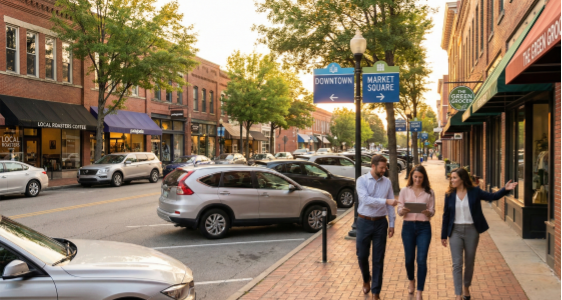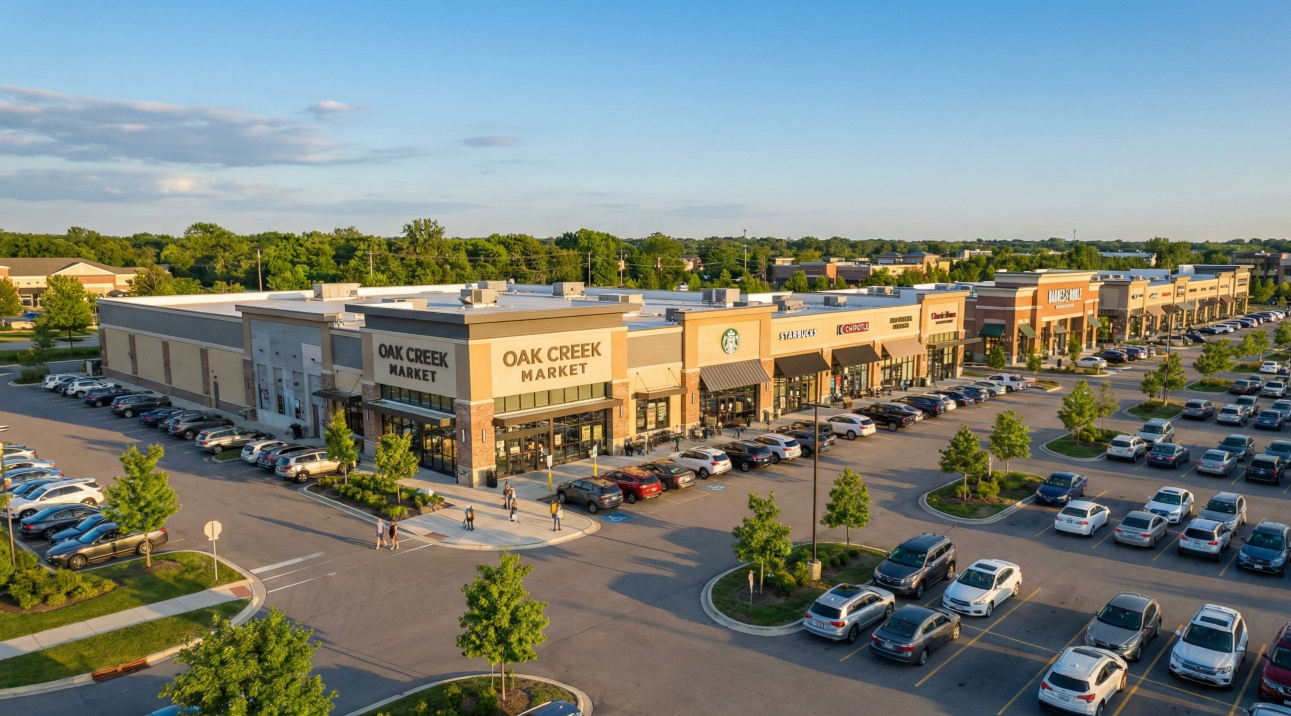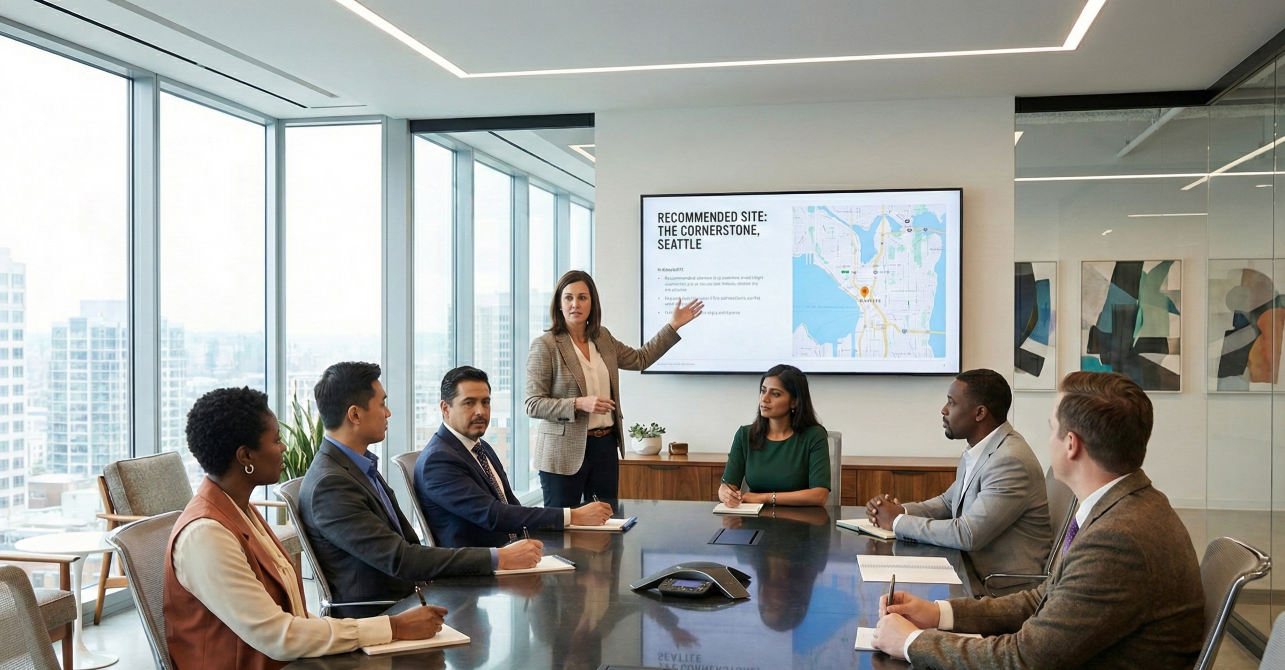From Vacancy to Vibrancy: Practical Upgrades That Drive Retail Property Performance

Retail has changed—but that doesn’t mean your property is past its prime. Many suburban shopping centers today are just a few strategic moves away from stronger foot traffic, higher tenant satisfaction, and healthier returns. Whether you're dealing with dated signage, a few stubborn vacancies, or a tenant mix that’s lost its spark, there are actionable ways to unlock more value in your center without taking on major redevelopment risk.
At CRE 360, we help landlords take a proactive approach—identifying the upgrades and leasing strategies that turn underperforming assets into top-tier retail destinations.
What "Value-Add" Really Means for Shopping Center Owners
When you hear "value-add," you might picture expensive overhauls or risky speculative plays. But for most landlords, value-add simply means this: investing smartly to make your center more attractive to tenants and shoppers.
You know the signs: high turnover among smaller tenants, an anchor that no longer pulls its weight, or a center that blends into the background on a busy retail corridor. With the right improvements—and the right timing—you can turn those pain points into performance gains.
Four Practical Ways to Upgrade Your Center
1. Reevaluate and Refresh Your Tenant Mix
Your tenants are the heartbeat of your property. If your mix hasn’t evolved in years, it may not reflect what local consumers want now. Today’s strongest performers are often service-driven and e-commerce-resistant: think medical, fitness, specialty food, education, and quick-service restaurants.
“Replacing underperforming or stale concepts with experiential or needs-based tenants can boost traffic and retention—without competing on rent alone.”
A good tenant mix isn’t just about diversity; it’s about synergy. Complementary businesses keep people on-site longer and encourage repeat visits.
2. Make Targeted Physical Improvements
You don’t need a multi-million dollar renovation to change how your property is perceived. Cosmetic and functional upgrades—new paint, signage, lighting, and parking lot striping—can go a long way.
According to ICSC, even modest property upgrades can increase tenant satisfaction and lease renewal rates, making them a smart first step in repositioning.
3. Reconfigure to Match Modern Demand
Spaces that once worked for big-box retail might now sit vacant because they no longer meet market needs. Reconfiguring those into smaller bays, adding drive-thru capability, or allowing for outdoor seating can help you attract modern retailers.
Flexibility is key. If you can adjust to tenant-specific needs quickly, you can lease space faster and at stronger rates.
4. Tune Up Your Leases
Lease structure is just as important as who’s occupying your center. Do your agreements account for inflation? Are you recovering CAM and taxes efficiently? Is there opportunity to introduce percentage rent with high-performing tenants?
Tuning up your leases ensures that any operational improvements translate into NOI growth. It also provides predictability and stability for both you and your tenants.
When to Spend—And What to Expect
Every landlord has a different threshold for capital improvements. But whether you have $50K or $500K to invest, there's likely a high-impact opportunity within reach. Here's a general framework:
- Under $100K: Cosmetic upgrades, signage, lighting, parking repairs
- $100K–$500K: Façade refresh, tenant bay reconfigurations, common area improvements
- $500K+: Anchor repositioning, significant layout changes, new pads or buildouts
These budget ranges reflect typical retail property improvement costs. For example, tenant build-outs often range from $50 to $150 per square foot, depending on scope and finishes, while cosmetic upgrades like lighting and resurfacing commonly fall under $100,000 for small centers (Maxx Builders).
Start with a property diagnostic—we often find that small tweaks unlock surprisingly large returns.
Landlord Snapshot
One real-world example is the La Palma Retail Center in Orange County, CA. Managed by Coastline Equity, the center underwent a series of practical renovations to reposition the property in a competitive suburban market. The improvements focused on enhancing curb appeal, upgrading common areas, and adjusting the tenant mix to better meet local demand.
The result? The center achieved 100% occupancy, attracted higher-quality tenants, and increased rental income—all without a full-scale redevelopment. It’s a strong example of how landlords can drive value through smart, phased improvements. (Coastline Equity)
Is Your Property Sitting on Untapped Potential?
You don’t need to wait for a lease to expire or a new tenant to knock on your door. Small moves today can create significant long-term advantages—especially in competitive suburban markets where newer developments are setting the standard.
A quick audit of your tenant mix, lease terms, and property condition can reveal your next best move.
Let’s Talk About Your Center
If you're wondering where to start, we’re here to help. Schedule a free strategy consultation with CRE 360 and discover where your property could go next.
Schedule a Strategy Consultation
Ready to Elevate Your Strategy?
Schedule a consultation today to discuss your project and see how we can help you achieve your goals.
Stay Updated with CRE 360
Get the latest insights and updates from CRE 360 in your inbox.




